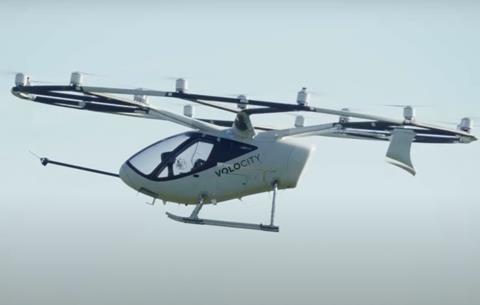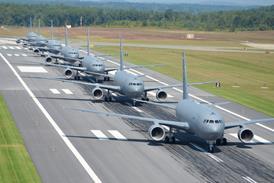As climate imperatives increasingly challenge air transport, the sector is desperately seeking new technologies to mitigate damage caused by old ones.
Battery, hydrogen and hybrid propulsion systems, lightweight materials, and better aerodynamics are all continually evolving for deployment in emergent low-or-no emission aircraft.

But it’s one of the oldest technologies, and literally the most revolutionary, which is playing a leading role in turning the industry around.
It’s the propeller. And it’s in high demand.
Propellers have been in use since the first powered flight 121 years ago, performed near Kitty Hawk, North Carolina, by the Wright Brothers, Orville and Wilbur.
Two wooden propellers, hand made from light but strong spruce timber, helped launch their ‘Wright Flyer,’ and for decades after, until the jet age dawned in the 1950s, every powered plane had props.
The use of propellers declined for a time as jets entered markets previously served solely by large turboprops, or as prop-powered planes became unfashionable.
But now propellers have come full circle as zero emission powertrains are progressed for regional air transport, while also driving the development of urban air mobility, in which air taxis fly both vertically and horizontally.
Major propeller makers including GE Aviation’s Dowty-Rotol, Textron’s McCauley, and US-based Hartzell have long been focused not just on supporting general, regional, and military aviation, but also improving prop technologies to reduce noise and weight, improve aerodynamics, and boost takeoff, climb and payload performance.
They produce hundreds of variants for existing and evolving fleets. Now, including all-new concepts, they’ll support a vastly wider range of aircraft, some with up to 16 propellers.
Stephan Baur is a Munich-based partner and expert in the aerospace and aviation division of global business consultancy Roland Berger, which has just completed a study of regional and urban air mobility growth to 2050, the year aviation is targeting for net-zero carbon operations.
The consultancy estimates that by then regional aviation will be served by 50,000-70,000 aircraft of 5-19 seats.
It also projects urban air mobility will account for around 178,000 machines, including for emergency services.
“Almost all of these aircraft will have propellers,” says Baur.
“It’s difficult to forecast the number and the kinds – for example, the number of blades - that will be needed because each of the manufacturers has a completely different aircraft archetype, and no dominant design has emerged yet.”
But, he adds, it is clear from projected numbers of aircraft that demand for propellers will be huge.
In regional air mobility alone, Roland Berger says aircraft in the five-nine and 10-19-seat categories increased from around 2,000 in 1970 to 67,000 in 2005, before plunging to about 20,000 today.
Adding new general aviation and commuter planes, plus existing models retrofitted with low-or-no emission powertrains, the company sees a clear resurgence of 5-19 seat propellered aircraft, with average annual growth of 4% reaching a minimum just shy of 50,000 units in 2050.
In addition, there are larger, longer-range turboprops, with European airframer ATR projecting 2,450 new 40-80 seaters by 2041 and Embraer expecting 2,210 by 2042.
There are also external fan jet engines being developed as potential successors to current marques.
But that’s not the biggest part of the story.
From no urban air mobility services operating in 2020, projections show air taxi numbers will reach 10,000 by 2030, 64,000 by 2040, and 178,000 by 2050.
That presents big opportunities for propeller manufacturers - and significant logistical challenges.
The entire aerospace industry is still struggling with supply chain failures, caused by shortages of materials, supplies, and staff, and resulting in long delays to production.
“The very good news is that we have a lot of established manufacturers out there, and we also have a lot of knowledge and capability to build,” says Baur.
But there’s still the question of production capacity to meet such soaring demand, leading to prospects of consolidation or increased automation.
The revolution is just starting.


























